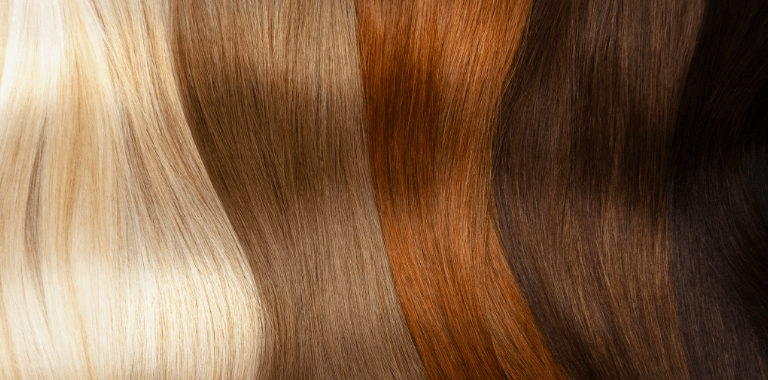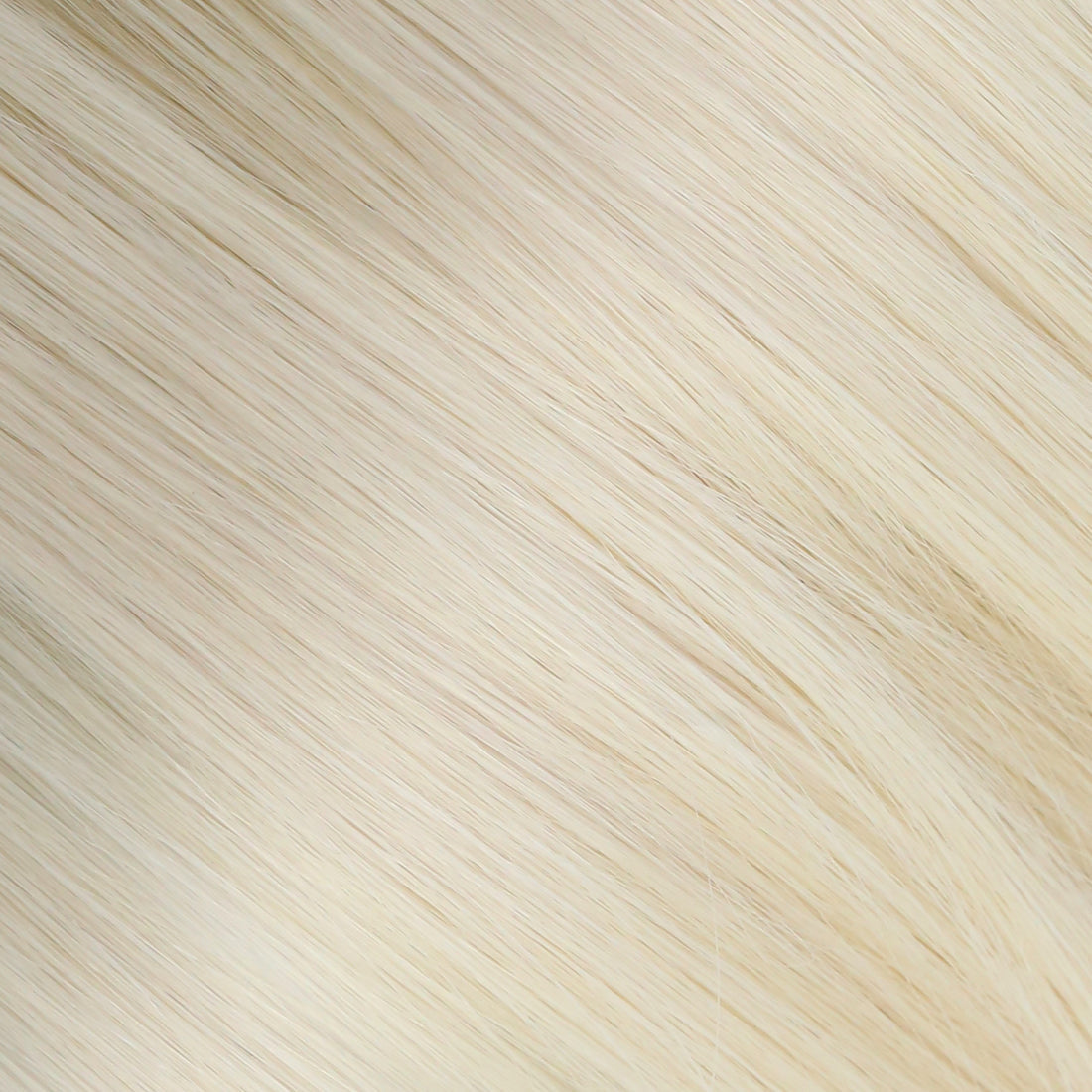Hair extensions have become a popular way to achieve longer, fuller hair without a long-term commitment. Clip in hair extensions, in particular, offer a convenient and temporary solution for changing up your look. However, one common question many people have is: can you sleep with clip in hair extensions? In this comprehensive guide, we'll explore whether it's safe or advisable to sleep with clip in extensions, provide tips for those who choose to do so, and offer advice on useful approaches for storing your clip in extensions when they're not used at night.
Understanding Clip In Hair Extensions
Before delving into the specifics of sleeping with clip in extensions, it's important to understand what they are and how they work. Clip in hair extensions are removable pieces of hair, typically attached to your natural hair using small, integrated clips. They come in various lengths, colors, and textures, allowing you to add volume, length, or highlights as desired.
The Risks of Sleeping with Clip In Hair Extensions
Typically, it's not advisable to sleep with clip in hair extensions. Because sleeping with clip in hair extensions can cause discomfort and increase the risk of tangling, breakage, and damage. To maintain the health of both your natural hair and the extensions, it's best to remove them before going to bed.
Potential for Damage
-
Hair Breakage: Sleeping with clip in extensions can increase the risk of hair breakage. The friction between the extensions and your pillowcase, combined with the movement while you sleep, can cause tangling and breakage in both your natural hair and the extensions.
-
Clip Damage: The clips used to attach the extensions might press against your scalp or hair, potentially causing discomfort or damage over time.
Tangles and Mats
-
Extension Tangling: Extensions can become tangled or matted while you sleep, especially if they are not securely attached or if there is significant movement. This can make them difficult to manage and may require additional maintenance to detangle.
-
Natural Hair Issues: Tangling in extensions can also affect your natural hair, leading to more breakage and damage.
Comfort Concerns
-
Discomfort: Depending on the clip design and how securely they are attached, sleeping with clip in extensions can be uncomfortable. The clips may press into your scalp or cause discomfort, disrupting your sleep quality.
-
Interference with Sleep: The presence of clips and additional hair can interfere with your ability to sleep comfortably, potentially leading to a restless night.
Maintenance Challenges
-
Extended Maintenance: Regularly sleeping with clip in extensions may increase the frequency of maintenance required. Extensions might need more frequent washing, detangling, and conditioning to keep them looking their best.
-
Potential for Damage: Consistent wear without proper care can shorten the lifespan of the extensions, leading to more frequent replacements or repairs.
Tips for Sleeping with Clip In Extensions
If you decide to sleep with clip In extensions, there are several strategies you can use to minimize potential issues and ensure your extensions and natural hair remain in good condition.
Choose High-Quality Extensions
-
Invest in 100% Remy Human Hair: High-quality clip in extensions, such as those made from 100% Remy human hair, are generally more durable and less prone to tangling. Investing in such quality extensions can help reduce damage and ensure a more comfortable sleep.
-
Opt for Double Drawn Hair: Double drawn extensions remove shorter hairs, resulting in a fuller, more consistent look from root to tip, which reduces the likelihood of tangling and ensures a smoother blend with your natural hair.
-
Select High-Grade Clip Mechanisms:Look for extensions with durable, high-quality clips made from stainless steel or other robust materials. These clips offer a secure fit, minimizing the risk of slipping or shifting while you sleep.
-
Choose Extensions with Reinforced Stitching: Extensions with reinforced stitching or secure weft construction are less likely to experience shedding or damage, ensuring they remain in good condition for longer.
Secure Your Extensions Properly
-
Ensure Proper Attachment: Make sure the clips are securely attached and that they lie flat against your scalp. Proper attachment can help prevent the extensions from shifting or causing discomfort while you sleep.
-
Avoid Overloading: Don't overload your hair with too many extensions. Use only the number of wefts needed for the desired look to minimize bulk and reduce the risk of tangling.
Protect Your Hair
-
Use a Silk or Satin Pillowcase: Silk or satin pillowcases cause less friction than cotton, which can help prevent tangling and breakage in both your natural hair and extensions.
-
Wrap Your Hair: Consider wrapping your hair in a silk or satin scarf or using a silk sleep cap. This can help reduce friction and keep the extensions and natural hair from tangling.
Prepare Your Hair Before Bed
-
Brush Thoroughly: Before going to bed, gently brush your hair and extensions to remove any tangles and ensure they are smooth. Use a wide-tooth comb or a brush specifically designed for extensions.
-
Loosen the Clips: If possible, loosen the clips slightly before sleeping to reduce pressure on your scalp and minimize discomfort. Just be sure they are still secure enough to stay in place.
Consider Alternative Approaches
-
Remove Extensions Before Bed: The safest and most effective way to prevent potential issues is to remove your clip in extensions before going to sleep. This avoids any risk of tangling, breakage, or discomfort and ensures that both your natural hair and the extensions remain in good condition.
-
Use Temporary Solutions: If you need to maintain your appearance overnight, consider using temporary solutions such as hairpieces or clips in ponytails, which can be removed before bed and reattached in the morning.
How to Store Clip In Hair Extensions at Night
If you choose not to sleep with clip in hair extension at night, there are some tips for you to proper store clip in hair extensions when not in use to help maintain their quality and extends their lifespan. Here's how to store them effectively
Detangle and Clean
-
Brush Gently: Before storing, gently brush the extensions to remove any tangles or knots. Use a wide-tooth comb or a brush designed for extensions.
-
Clean if Necessary: If the extensions need cleaning, follow the manufacturer's instructions. Make sure they are completely dry before storage to prevent mold and odor.
Use Proper Storage Solutions
-
Hang Extensions: Use a hanger or a specialized extension storage hanger to keep the extensions in a smooth, tangle-free position. Hanging helps maintain their shape and prevents them from becoming tangled.
-
Storage Bag: Alternatively, use a silk or satin storage bag designed for hair extensions. These bags help keep the extensions protected from dust and tangling.
-
Hair Extension Holder: Invest in a dedicated hair extension holder or mannequin head to keep the extensions in their natural shape and prevent tangling.
Keep in a Cool, Dry Place
-
Avoid Moisture: Store your extensions in a cool, dry place to prevent humidity and moisture from causing damage or mold.
-
Away from Direct Sunlight: Keep them out of direct sunlight to avoid color fading and heat damage.
Maintain the Shape
-
Clip Positioning: If the extensions have clips, ensure they are positioned flat and not bent to avoid distortion in their shape.
-
Avoid Folding or Compressing: Do not fold or compress the extensions, as this can create permanent bends or damage. Instead, keep them in a relaxed position.
-
Secure the Wefts Gently: If storing extensions in a bag or box, secure them gently with a tie or band to prevent shifting, which can cause tangling and shape distortion.
-
Avoid Overlapping Wefts: Store each weft separately to prevent them from overlapping and tangling, which helps maintain their original shape and style.
Regular Inspection
-
Check for Tangling: Examine your extensions for any signs of tangling or knots. If found, gently detangle using a wide-tooth comb or brush specifically designed for extensions to prevent damage.
-
Inspect Clips and Attachments: Examine the clips and attachment points to ensure they are functioning correctly and not showing signs of wear or damage. Replace any faulty clips to avoid issues during use.
-
Examine for Wear and Tear: Inspect the extensions for any visible signs of wear, such as split ends or thinning. Address any damage immediately to prevent further deterioration.
-
Ensure Proper Storage Conditions: Verify that the storage conditions are still suitable, including checking that the extensions are kept in a cool, dry place away from direct sunlight and moisture etc.
-
Test for Elasticity: Gently test the elasticity of the extensions to ensure they have retained their flexibility and have not become brittle or damaged over time.
Conclusion
In conclusion, as for the question confusing many people: can you sleep with clip in hair extensions? The answer is, sleeping with clip in hair extensions is a personal choice and comes with both benefits and potential risks. While it's possible to sleep with clip-ins, doing so may lead to tangling, breakage, and discomfort. To minimize these issues, ensure proper attachment, use protective measures like silk pillowcases, and consider removing the extensions before bed for optimal care.
By following the tips outlined in this guide, you can make an informed decision about whether to sleep with clip in extensions and how to maintain their appearance and health. Remember, the key to enjoying beautiful, long-lasting clip in extensions is proper care and maintenance, whether you choose to sleep with them or not.












